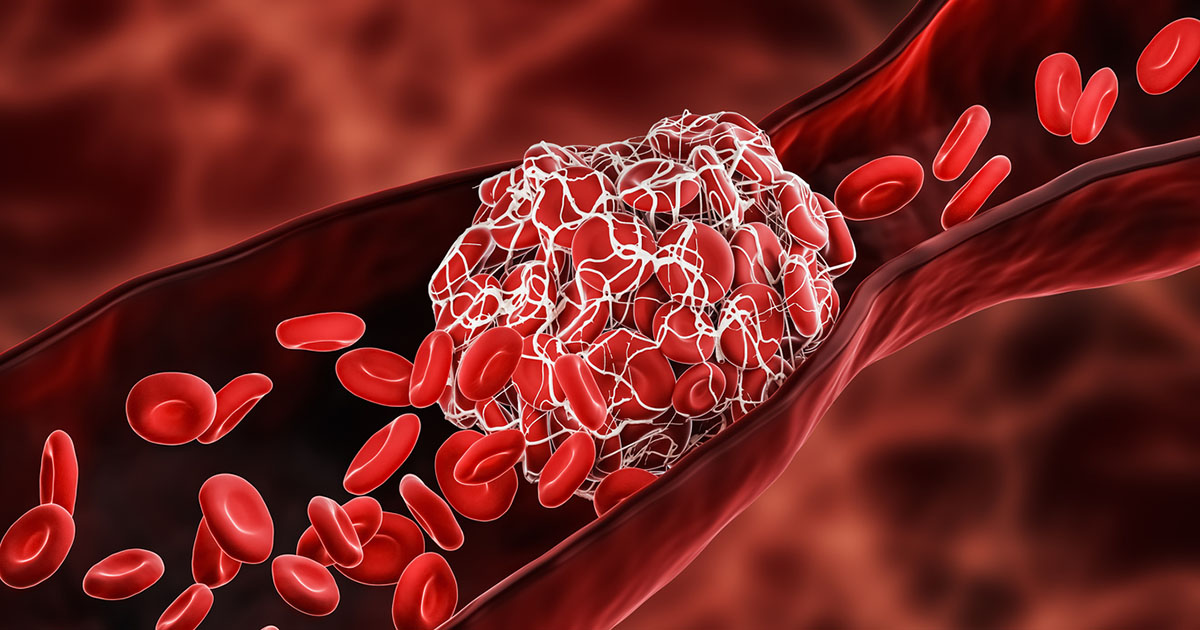New obesity Standards of Care highlight risk of weight bias and stigma in healthcare professionals
● The first of the new Standards of Care in Overweight and Obesity guidelines, from the Obesity Association, a division of the ADA, were presented at the Sessions.
● The guideline covers weight bias and stigma, and concludes with seven key recommendations:
- All clinicians and staff should be trained on weight bias and stigma.
- Implement protocols to minimise risk of stigmatisation during provision of healthcare services, including during measurements and communication.
- Ensure availability of clinical equipment and furniture that accommodates all individuals.
- Provide privacy during measurements, including locating scales in a private place.
- Use person-centred and non-judgemental language that supports collaboration, including using person-first language.
- Engage in shared decision-making, including collaborative goal setting and supporting long-term obesity care.
- Ask permission to discuss weight and before weighing. Explore preferred terms/words to discuss weight.
● The guideline was published in BMJ Open Diabetes Research & Care. For a more detailed review, see our previous Diabetes Distilled.
Cagrilintide plus semaglutide: The REDEFINE studies
● Cagrilintide is a long-acting analogue of amylin, a satiety hormone involved in food intake, body weight and glycaemia, which affects appetite regulation and has previously been shown in Phase 2 studies to reduce weight.
● CagriSema is a combination of cagrilintide and the GLP-1 RA semaglutide currently in development, and was evaluated for weight management in the REDEFINE series of studies.
REDEFINE 1: CagriSema in people with overweight/obesity and without T2D
● 3417 adults with BMI ≥30 or BMI ≥27 plus one obesity-related complication (not diabetes) were randomised double-blind to CagriSema (n=2108), cagrilintide alone (n=302), semaglutide alone (n=302) or placebo (n=705), all alongside lifestyle intervention, for 52 weeks.
● Primary endpoints:
- Mean body weight reduction with CagriSema vs placebo: 20.4% vs 3.0%.
- Proportion achieving ≥5% weight loss: 91.9% vs 31.5%.
● Secondary endpoints (prespecified hierarchical analysis; not all results presented here):
- Greater weight reductions with CagriSema than semaglutide or cagrilintide alone (20.4% vs 14.0% vs 11.5%).
- 53.6% of CagriSema recipients achieved ≥20% weight loss (vs 1.9% placebo).
- In a subgroup of participants who underwent DEXA body composition analysis, fat mass reduced by 17.0 kg and lean mass by 8.4 kg with CagriSema (thus, one-third of weight loss was from lean mass).
- Greater improvements in blood pressure, glycaemia, lipids and C-reactive protein levels seen with CagriSema vs placebo.
● Adverse events:
- Gastrointestinal events most common (79.6% with CagriSema vs 39.9% with placebo).
- Fatigue, dizziness, alopecia, gallbladder disorders and injection site reactions were also more common with CagriSema.
- Serious adverse events (SAEs): 9.8% with CagriSema, 5.0% semaglutide, 8.9% cagrilintide, 6.1% placebo. Hepatobiliary and gastrointestinal disorders were the most common SAEs with CagriSema.
REDEFINE 2: CagriSema in people with overweight/obesity and type 2 diabetes
● 1206 adults with BMI ≥27 and HbA1c 53–86 mmol/mol (7.0–10.0%) were randomised double-blind to CagriSema or placebo (3:1 ratio), in conjunction with standard diabetes care, for 52 weeks.
● Primary endpoints:
- Mean body weight reduction with CagriSema vs placebo: 13.7% vs 3.4% (consistent with previous studies showing lower weight-loss efficacy in people with type 2 diabetes than without).
- Proportion achieving ≥5% weight loss: 83.6% vs 30.8%.
● Secondary endpoints (prespecified hierarchical analysis; not all results presented here):
- 22.9% of CagriSema recipients achieved ≥20% weight loss (vs 0.5% with placebo).
- HbA1c reduced by 1.8% vs 0.4% (19.6 vs 4.4 mmol/mol) with CagriSema vs placebo.
- 73.5% vs 15.9% achieved HbA1c ≤48 mmol/mol with CagriSema vs placebo.
- Greater improvements in blood pressure, lipids, C-reactive protein and physical function scores with CagriSema.
● Adverse events:
- Gastrointestinal events most common (72.5% with CagriSema vs 34.4% with placebo).
- Level 2–3 hypoglycaemia: 6.2% vs 3.0% in CagriSema vs placebo recipients.
- Serious adverse events: 10.4% vs 12.9% in CagriSema vs placebo recipients.
● Read the published studies in the New England Journal of Medicine: REDEFINE 1 | REDEFINE 2
Countering muscle loss with incretins using bimagrumab: The BELIEVE study
● Bimagrumab is a developmental monoclonal antibody that blocks activin pathways (e.g. myostatin) responsible for inhibiting muscle growth and increasing lipid storage in adipose tissue, thus increasing muscle mass and decreasing fat mass (particularly visceral and hepatic).
● The BELIEVE study was conducted to determine whether adding intravenous bimagrumab to subcutaneous semaglutide treatment would offset the loss in muscle mass that occurs with incretin-based therapies.
● 507 adults with BMI ≥30, or BMI ≥27 plus one obesity-related comorbidity (diabetes excluded), were randomised double-blind to placebo, bimagrumab+semaglutide (abbreviated here to bima/sema) at varying doses, or the same doses of the two drugs individually.
- All treatments were combined with monthly diet and physical activity counselling.
● Primary endpoint: mean percentage change in body weight after 48 weeks (treatment policy estimand). Comparing the highest doses of the drugs (bimagrumab 30 mg and semaglutide 2.4 mg):
- Bima/sema: 17.8% reduction.
- Semaglutide: 14.2% reduction.
- Bimagrumab: 9.3% reduction.
- Placebo: 3.3% reduction.
● In a 24-week open-label extension, weight loss continued but at slower rates.
● With the highest doses, the degree of weight loss attributable to lean mass was 28.5% with semaglutide alone, but only 7.1% with bima/sema. Bima/sema resulted in a 33.7% reduction in fat mass, versus 21.1% with semaglutide, 18.9% with bimagrumab and 5.6% with placebo.
● Mean visceral fat (measured with DEXA) was reduced by 43.8% with bima/sema, 24.5% with semaglutide and 3.3% with placebo.
● Bima/sema showed greater reductions compared with the individual drugs in terms of hsCRP (inflammation), triglycerides (but not cholesterol), HbA1c, blood pressure and adiponectin.
● Adverse events with bima/sema:
- Typical events associated with GLP-1 RAs (mostly gastrointestinal), plus muscle spasms and acne.
- Bimagrumab-containing treatments showed early but transitory increases in ALT and lipase; semaglutide alone was associated with sustained increases in lipase.
● A Phase 2 study of subcutaneous bimagrumab plus tirzepatide is underway.
Orforglipron: A novel oral GLP-1 receptor agonist
● Orforglipron is a small-molecule, non-peptide, high-affinity partial GLP-1 receptor agonist, currently in development for type 2 diabetes and weight management.
● It is an oral medication but has higher bioavailability, no specific dietary restrictions and simpler dosing than currently available oral GLP-1 RAs.
ACHIEVE-1 study: Orforglipron in people with type 2 diabetes
● Enrolled 559 people with type 2 diabetes (HbA1c 7.0–9.5% [53–81 mmol/mol], mean diabetes duration 4.4 years) managed with diet and exercise alone.
- Median baseline HbA1c 8.0% (64 mmol/mol), randomised double-blind to orforglipron 3 mg, 12 mg or 36 mg, or placebo, once daily for 40 weeks.
● Primary endpoint: mean change in HbA1c from baseline to week 40:
- 1.24% reduction with 3 mg.
- 1.47% reduction with 12 mg.
- 1.48% reduction with 36 mg.
- 0.41% reduction with placebo.
● HbA1c <7.0% (53 mmol/mol) achieved in 68–73% with orforglipron, 33% with placebo.
● HbA1c <5.7% (39 mmol/mol) achieved in 17–24% with orforglipron.
● Mean HbA1c at week 40: 6.5–6.7% (48–50 mmol/mol) with orforglipron.
● Percentage change in body weight from baseline to week 40:
- 4.5% reduction with 3 mg.
- 5.8% reduction with 12 mg.
- 7.6% reduction with 36 mg.
- 1.7% reduction with placebo.
● Many additional secondary endpoints were examined but are not included here.
● Adverse events:
- Mild to moderate gastrointestinal events, mainly during dose escalation.
- No severe hypoglycaemia or adjudicated cases of pancreatitis reported.
- Permanent discontinuation occurred for any cause in 4.4–7.8% of orforglipron and 1.4% of placebo recipients.
● Future trials:
- ACHIEVE-3: Orforglipron versus oral semaglutide for 52 weeks.
- ACHIEVE-4: Orforglipron versus insulin glargine for 104 weeks.
● ACHIEVE-1 was simultaneously published in the New England Journal of Medicine.
MariTide: Once-monthly incretin therapy for weight management
● Maridebart cafraglutide (MariTide) is made up of two identical GLP-1 peptide analogues conjugated to a single monoclonal antibody antagonist to the GIP receptor.
● It is administered subcutaneously at monthly intervals or less frequently, and is in development for the treatment of obesity.
MariTide Phase 2 obesity trial
● Two-part, double-blind, placebo-controlled trial. Part 1 is a 52-week dose-ranging and escalation trial reported here; part 2 will investigate maintenance dosing over an additional 52 weeks.
● Obesity cohort: 465 adults with BMI ≥30, or BMI ≥27 and at least one obesity-related comorbidity and HbA1c <48 mmol/mol. Assigned 3:3:3:2:2:2:3 to MariTide or placebo:
- 140 mg, 280 mg or 420 mg every 4 weeks, no dose escalation.
- 420 mg every 8 weeks, no dose escalation.
- 4-weekly dose escalation up to 420 mg every 4 weeks.
- 12-weekly dose escalation up to 420 mg every 4 weeks.
- Placebo.
● Obesity–diabetes cohort: 127 adults with BMI ≥27 and type 2 diabetes with HbA1c 53 to ≤86 mmol/mol; stable on lifestyle alone or metformin, an SGLT2 inhibitor or a sulfonylurea. Assigned 1:1:1:1 to MariTide or placebo:
- 140 mg, 280 mg or 360 mg every 4 weeks, no escalation.
- Placebo.
● Primary endpoint: mean percentage change in body weight at week 52 (treatment policy estimand, intention-to-treat approach). All results significant:
- Obesity cohort: –12.3% to –16.2% with MariTide versus –2.5% with placebo.
- Obesity–diabetes cohort: –8.4% to –12.3% with MariTide versus –1.7% with placebo.
- Obesity–diabetes cohort: HbA1c reduction of –1.2% to –1.6% with MariTide versus 0.1% with placebo.
● Adverse events:
- Gastrointestinal events were common, affecting more than 90% treated with MariTide and 68–87% in the placebo-treated groups. Adverse events were less frequent when starting with a lower dose and with dose escalation.
- There were no unexpected safety signals.
● The study was simultaneously published in the New England Journal of Medicine.
Treating hypercortisolism to improve glycaemic control: The CATALYST trial
● CATALYST is a two-part study into hypercortisolism in type 2 diabetes.
- Part 1 demonstrated that hypercortisolism was present in one-quarter of people who had poor glycaemic control despite treatment with multiple glucose-lowering therapies (Buse et al, 2025).
- Part 2, presented at the Sessions, investigated whether treating the hypercortisolism with mifepristone would improve glycaemic control.
● 136 adults with difficult-to-control diabetes, in whom hypercortisolism had been identified in part 1 of CATALYST using an overnight dexamethasone suppression test, were randomised 2:1 to mifepristone or placebo in conjunction with their current medication.
● Over 24 weeks of treatment, compared with placebo, mean HbA1c fell by 16 mmol/mol (1.47%) in the mifepristone group.
- Mean body weight decreased by 4.4 kg with mifepristone, versus an increase of 0.72 kg with placebo.
- Within the first 12 weeks of treatment, dose reductions or discontinuations of rapid-acting insulin (30% vs 11%), long-acting insulin (49% vs 13%) and sulfonylureas (22% vs 11%) were more common in the mifepristone arm.
● Overall, 46% and 18% of participants discontinued mifepristone and placebo, respectively.
- Severe adverse events occurred in 29% vs 2% of mifepristone vs placebo recipients. These included hypokalaemia in 5% of mifepristone recipients and euglycaemic DKA in 3% (all of whom were taking SGLT2 inhibitors).
● The authors conclude that hypercortisolism is a potential target, with a simple test for diagnosis, for treatment to improve glycaemic control in people with difficult-to-control type 2 diabetes.
- However, they highlight that treating such people with mifepristone is complex and careful monitoring for side effects related to cortisol withdrawal and hypokalaemia is vital. Further exploration, evidence and education will be required before this is suitable for primary care initiation.
● The study was simultaneously published in Diabetes Care.






ICBs in England are undergoing a major restructure. Guest editor Hannah Beba asks how this might affect diabetes care.
9 Jul 2025